1. Grade: SUS 304 SUS304L, SUS316, SUS316L, or carbon steel
2. Slot Size: 0.02mm~15mm
3. Standard: DIN AISI ASTM
4. Certification: ISO9001, API 5CT
5.Pipe based well screens consist of base pipe,all-welded wedge wire screen and supporting rod.The base pipe is perforated or slotted API casing pipe,the base pipe can be stainless steel or carbon steel API 5CT casing.The all-welded wedge wire screens are welded together with base pipe by supporting rod.
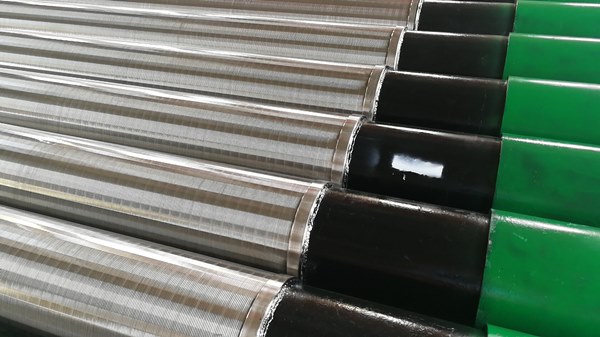
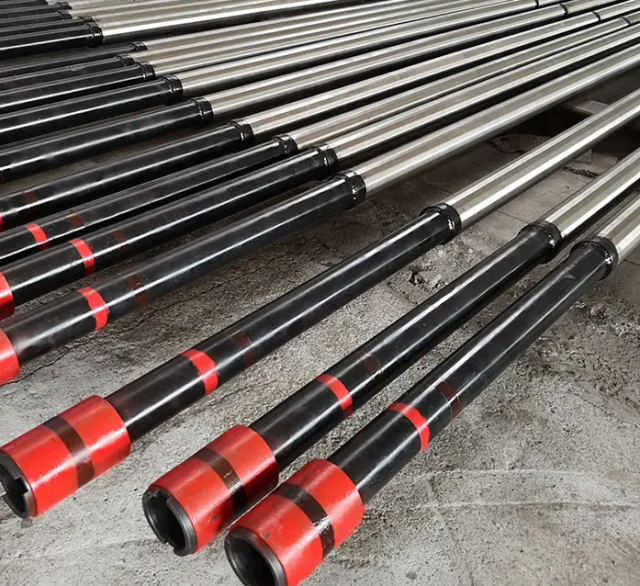
6.Features of Pipe Based Well Screens:
1)Higher filtering accuracy: all-welded wedge wire screens as screen jacket with vee opening design makes the filtering accuracy higher,which can control sand better.
2)Excellent strength and resistance to deformation: The base pipe inside,the outside can be protected with the protection jacket added according to requirements,the integrated strength of the perforated base pipe only decreases 2~3% compared with the standard casing/oil tubing,so the pipe based well screens have enough integrated strength to resist to the pressure caused by strata.Even if some part of the well screens deformed,the slot of this part will not be widened,which makes higher sand controlreliability
3)More choices: the material of screen jacket can be stainless steel or carbon steel,the material can be chosen as per customers’requirement.
4)The smaller slot will increase the oil and gas production.
PIPE PARAMETER
Length range 6-13m
Standard: API 5CT
Certification: API 5CT, GOST, ISO9001, ISO14001,OHSMS18000
Material: H40, M65,J55, K55, N80,L80, L90,C90,T95,P110,Q125, V150
Type of thread: STC,LTC,BTC,XC,NU,EU, XBY premium
|
4 1/2
|
114.30
|
11.60
|
17.26
|
J55 K55 N80
|
6.35
|
|
13.50
|
20.09
|
J55 K55 N80
|
7.37
|
|
5
|
127.00
|
15.00
|
22.32
|
J55 K55 N80
|
7.52
|
|
18.00
|
26.79
|
N80 P110
|
9.29
|
|
21.40
|
31.85
|
N80 P110
|
11.10
|
|
5-1/2
|
139.70
|
17.00
|
25.30
|
J55 K55 N80
|
7.72
|
|
20.00
|
29.76
|
N80
|
9.17
|
|
23.00
|
34.23
|
N80
|
10.54
|
|
7
|
177.80
|
23.00
|
34.23
|
J55 K55 N80
|
8.05
|
|
26.00
|
38.69
|
J55 K55 N80
|
9.19
|
|
29.00
|
43.16
|
N80
|
10.36
|
|
9-5/8
|
244.48
|
43.50
|
64.74
|
N80
|
11.05
|
|
47.00
|
69.94
|
N80
|
11.99
|
|
10-3/4
|
273.05
|
40.50
|
60.27
|
H40 J55 K55N80
|
8.89
|
|
51.00
|
75.90
|
J55 K55 N80
|
11.43
|
|
13-3/8
|
339.73
|
54.50
|
81.80
|
J55 K55
|
9.65
|
|
68.00
|
101.19
|
J55 K55 N80
|
12.19
|
|
16
|
406.40
|
65.00
|
96.73
|
J55 K55 N80
|
9.53
|
|
75.00
|
111.61
|
11.13
|
|
18-5/8
|
473.10
|
87.50
|
130.21
|
J55 K55 N80
|
11.05
|
What is API 5CT Well Screen Oil Casing?
API 5CT well screen oil casing is a type of oilfield equipment used to separate oil, gas, water, and other materials from the wellbore. It is installed either inside or outside the wellbore to prevent the fluid from entering and damaging the surrounding environment. It is an important part of the oilfield production system.
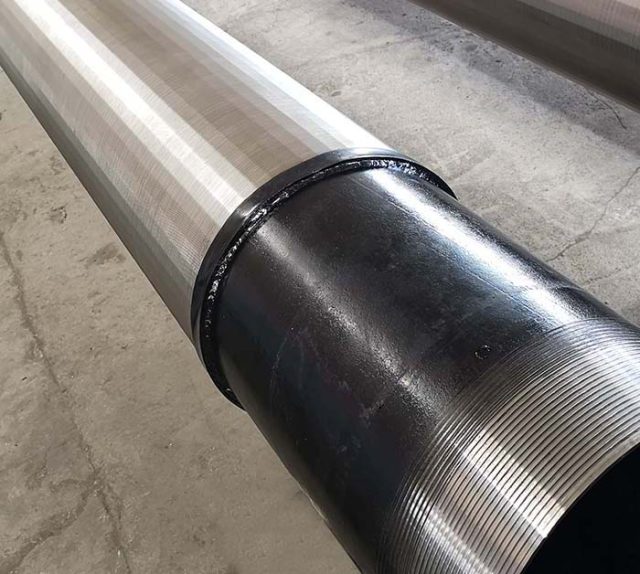
API 5CT well screen oil casing is manufactured from a variety of materials, including carbon steel, stainless steel, and non-corrosive alloys. The material used depends on the specific application and the operating environment. The casing is designed to provide a pressure-resistant barrier between the well and the surrounding environment, as well as to prevent the fluids and gases from entering the wellbore.
The API 5CT well screen oil casing is typically installed in a variety of configurations and sizes, depending on the type of oilfield production system and the size and shape of the wellbore. The casing can be either straight or tapered, depending on the type of well. The casing is also available in various sizes, from small-diameter to large-diameter, and is designed to fit the specific wellbore.
The API 5CT well screen oil casing is usually installed in the wellbore by a drilling crew. The casing is then connected to the surface equipment, such as the wellhead, by use of a casing hanger. The casing hanger is used to hold the casing in place and to prevent it from being displaced by the fluid forces. The casing is then connected to the wellhead by means of a casing seal or casing spacer, which seals the connection between the casing and the wellhead.
Once the casing has been installed, it is tested to ensure that it is able to withstand the pressures and temperatures of the oilfield production system. This is done by using a pressure test, which measures the pressure and temperature of the fluid inside the wellbore. If the casing fails this test, it must be removed and replaced.
API 5CT well screen oil casing is designed to provide a reliable and durable barrier between the well and the surrounding environment. It is also designed to prevent the fluid from entering the wellbore and damaging the surrounding environment. The casing is typically manufactured to meet the specific requirements of the oilfield production system and the size and shape of the wellbore.
Once the casing is installed, it is tested to ensure that it can withstand the pressures and temperatures of the oilfield production system. The casing is then connected to the surface equipment, such as the wellhead, by means of a casing hanger. The casing hanger is used to hold the casing in place and to prevent it from being displaced by the fluid forces. The casing is then connected to the wellhead by means of a casing seal or casing spacer, which seals the connection between the casing and the wellhead.
Once the casing is installed and tested, it is inspected for any damage or defects. If any damage or defects are found, the casing must be replaced. The casing must also be inspected for any signs of corrosion or wear. If any signs of corrosion or wear are found, the casing must be replaced.
API 5CT well screen oil casing is an important component of the oilfield production system. It provides a reliable and durable barrier between the well and the surrounding environment, as well as preventing the fluids and gases from entering the wellbore. The casing is typically manufactured to meet the specific requirements of the oilfield production system and the size and shape of the wellbore. In addition, the casing is usually tested to ensure that it is able to withstand the pressures and temperatures of the oilfield production system.
Related Posts
Water well screen pipe | Sand Control Screen
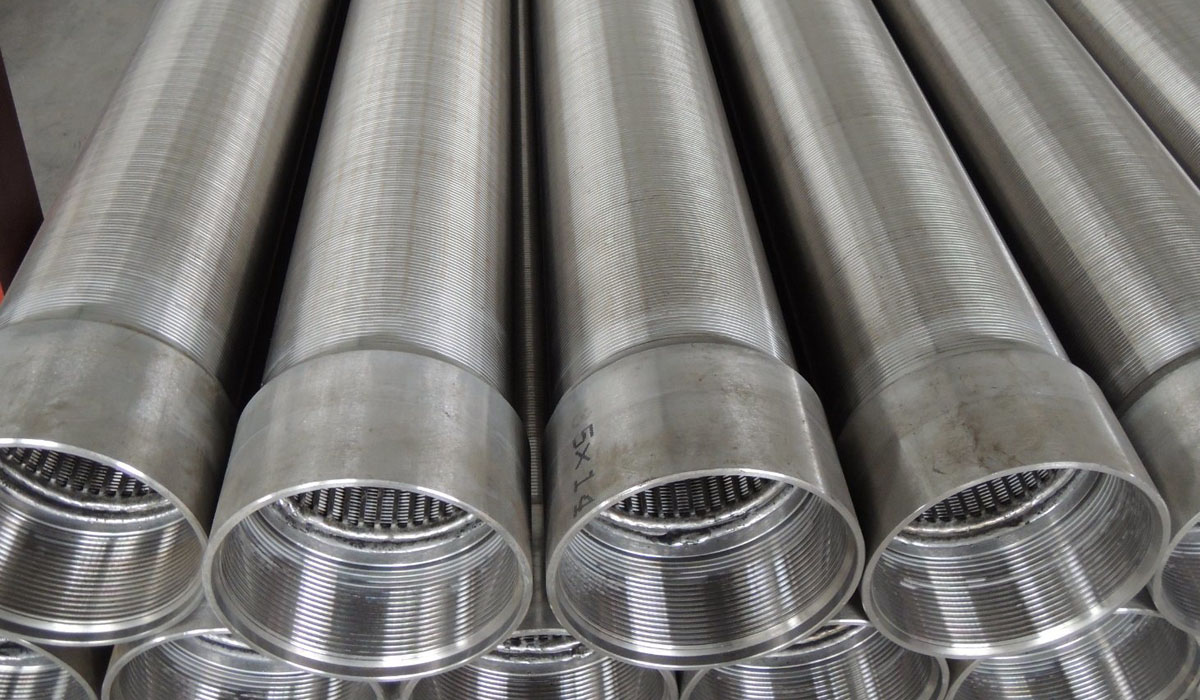
The water well screen is an important component of a well that allows water to flow into the well while preventing sediment and other debris from entering. The screen is typically located at the bottom of the well, near the aquifer. This is done to ensure that only clean water is collected and that any sediment or dirt is filtered out. The screen is typically made from a perforated pipe or other type of material that has small openings to allow water to pass through while blocking sediments from entering. Abter well screen is manufactured with a continuous v-shaped slot to reduce the entrance velocity of water and encrustation rates. Besides, Filson well screen has a large surface area without clogging, thus provide superior filtration performance. Well screen slot size selection is a critical step, typically based on the particle size analysis of the formation sample. With the standard slot size range from 0.005” to 0.5”, Filson well screen can control sand particles and silt from the well perfectly. Advantages of Water Well Screens 1. The V-shape section plane of water well screens creates the continuous slot, which can avoid blockage and make sure of the unimpeded water. Read more
Geothermal Pipe Based Screen | Sand Free Pipe Based Well Screen
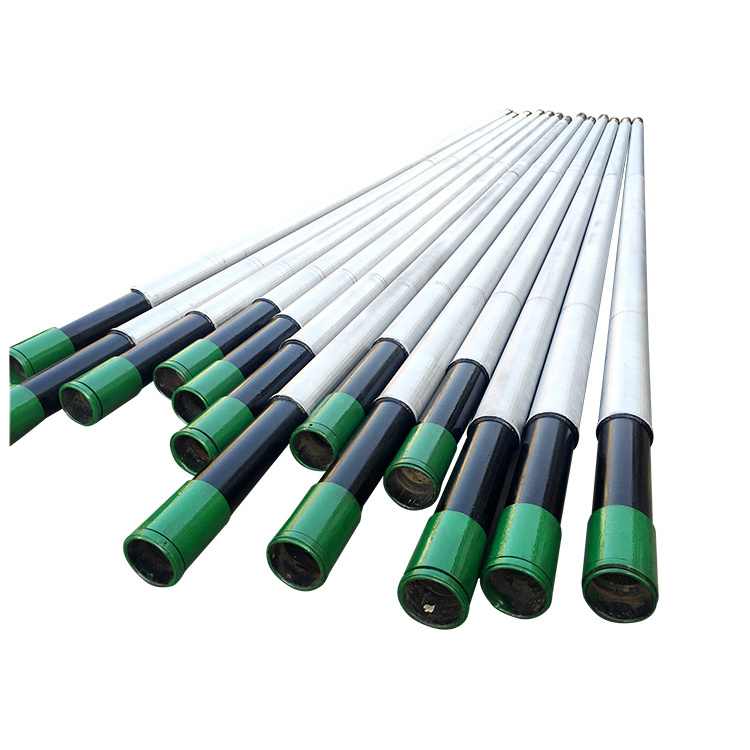
PARAMETER Geothermal Pipe based well screen specification: Nominal Diameter Pipe OD(mm) Weight lb/ftW.T[mm] Hole size In Holes per foot Total Areaofholes in2/ft Screen OD (in) 2-3/8 60 4.6[4.83] 3/8 96 10.60 2.86 2-7/8 73 6.4[5.51] 3/8 108 11.93 3.38 3-1/2 88.9 9.2[6.45] 1/2 108 21.21 4.06 4 101.6 9.5[5.74] 1/2 120 23.56 4.55 4-1/2 114.3 11.6[6.35] 1/2 144 28.27 5.08 5 127 13[6.43] 1/2 156 30.63 5.62 5-1/2 139.7 15.5[6.99] 1/2 168 32.99 6.08 6-5/8 168.3 24[8.94] 1/2 180 35.34 7.12 7 177.8 23[8.05] 5/8 136 42.16 7.58 7-5/8 194 26.4[8.33] 5/8 148 45.88 8.20 8-5/8 219 32[8.94] 5/8 168 51.08 9.24 9-5/8 244.5 36[8.94] 5/8 188 58.28 10.18 10-3/4 273 45.5[10.16] 5/8 209 64.79 11.36 13-3/8 339.7 54.5[9.65] 5/8 260 80.60 14.04 What is Geothermal Well Screen? Geothermal well screens are an essential component of a geothermal well system. They are used to filter and protect the geothermal well from debris and other contaminants that can be harmful to the system. Sand Control Screens are designed to be durable and reliable, providing long-term protection for the well. The geothermal well screen is a cylindrical tube made of a perforated metal or plastic material. The perforations are designed to allow Read more
Pre-packed well screen | Wire Wrapped Pre Packed Sand Screen
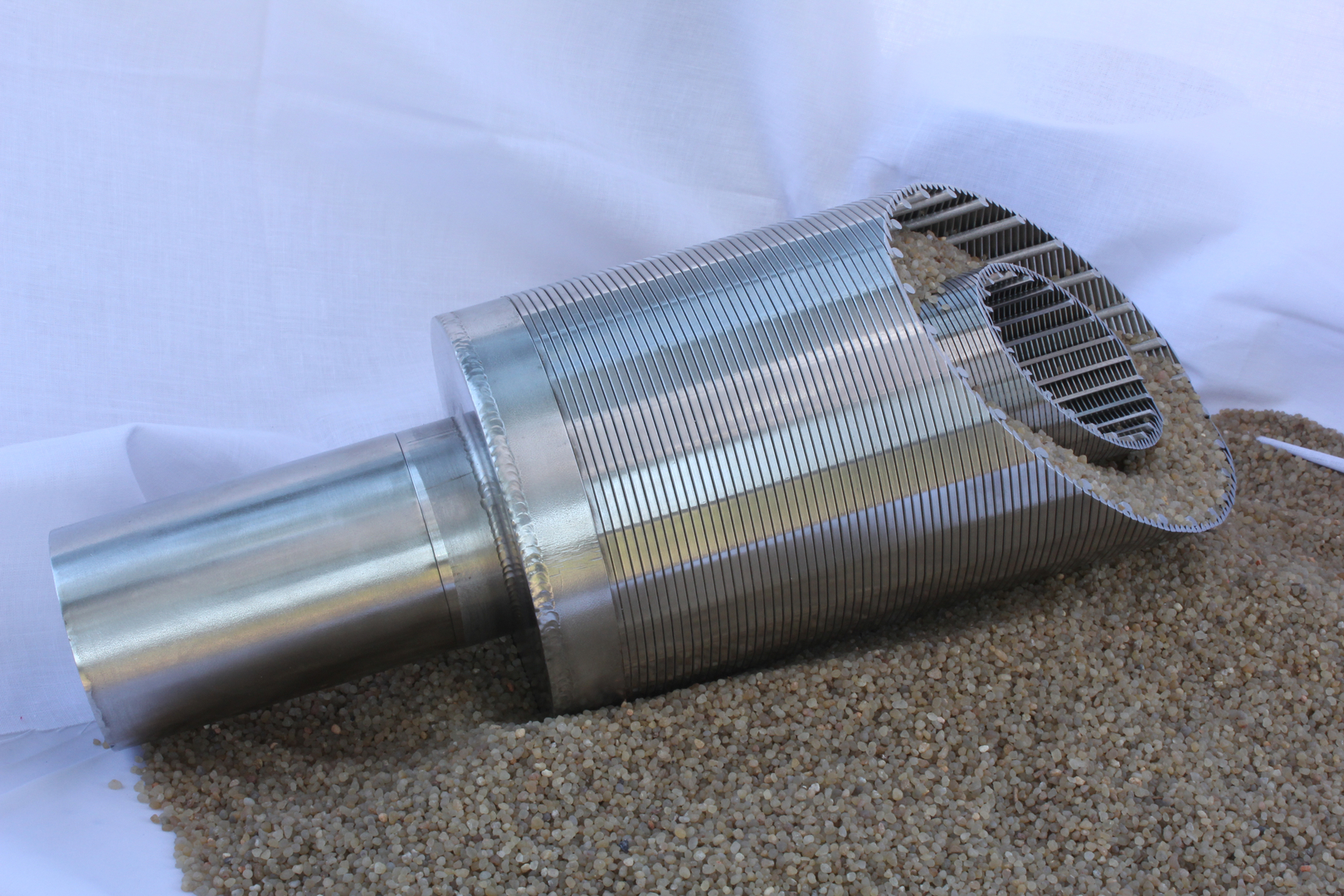
Pre Packed Sand Screen contains perforated base pipe, inner and outer screen jackets and graded sand between the jackets. It is a modification of wire wrapped screen which is used in well sorted sand or stand-alone completion. Graded sand, with or without resin coating, is considered as a filter for reservoir particles. Wire wrapped pre Pre Packed Sand Screen is used in wells where conventional gravel packing is not feasible or economical. The thickness of gravel layer can be varied to meet special requirement. What Is the Function of Gravel Pack? Gravel packing is one of popular sand-control technique used in oil, water and gas wells. It stabilizes the borehole and filters the sand from the flow, only allowing very fine particles in. Pre Packed Sand Screen wire wrapped sand screen brings it into full play in maximizing production as well as controlling the sand. Diameter: 168mm Material: stainless steel,carbon steel,etc Slot: 0.2mm End Connection: thread,coupling,etc thickness: 10mm Pre Packed Sand Screen PRODUCT SPECIFICATIONS Base Pipe Gravel Pack Perforations Screen OD (in.) ID (in.) Weight (lbs.) Coupling OD (in.) Thickness (in.) Size (in.) Holes/ft. OD (in.) Cylinder Area (sq. in./ft) 006 GA Inlet Area (sq. in./ft) 1.9 1.61 2.75 Read more
Slotted Casing Pipe | Slotted Liner Well Screen – API 5CT
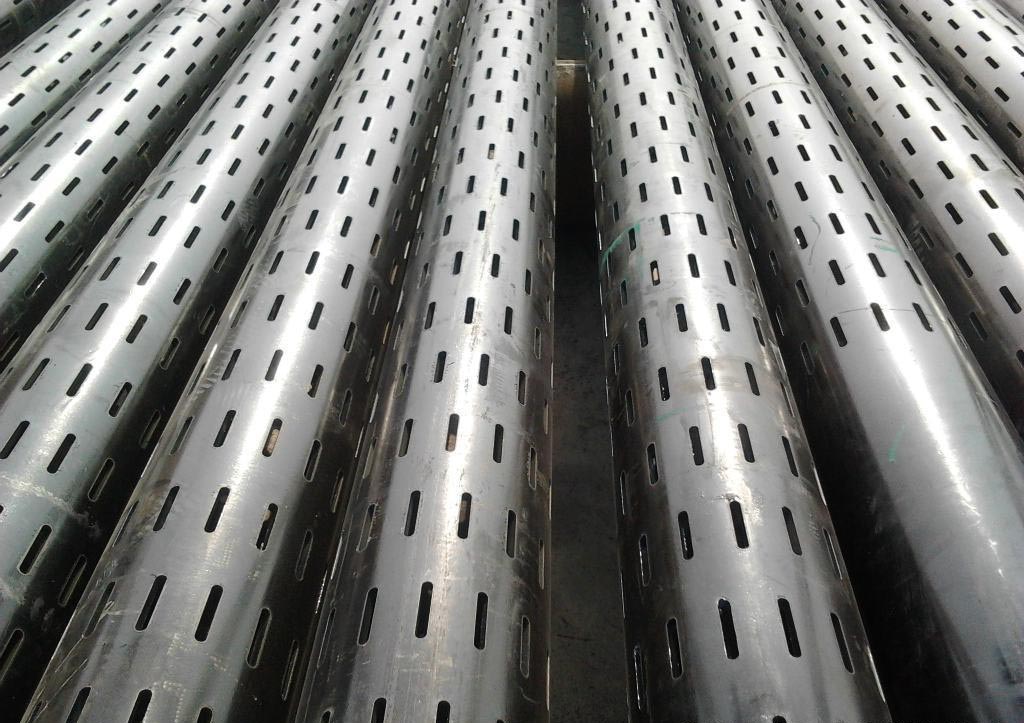
1. Introduction of Slotted Casing Pipe Casing pipe is a large-diameter pipe that serves as the structural retainer for the walls of oil and gas wells, or well bore. It is inserted into a well bore and cemented in place to protect both subsurface formations and the wellbore from collapsing and to allow drilling fluid to circulate and extraction to take place. Slotted casing pipe is a type of casing pipe that has slots machined into its surface. These slots are used to help control the flow of water, oil, and gas in a well bore. The slotted casing pipe is designed to allow water, oil, and gas to flow through the slots while preventing sand and other debris from entering the well bore. Slotted casing pipe is commonly used in oil and gas wells, water wells, and geothermal wells. 2. Types of Slotted Casing Pipe There are two main types of slotted casing pipe: open slot and perforated slot. Open slot casing pipe has slots that are cut into the surface of the pipe in a straight line. These slots are usually spaced evenly apart and are typically about 1/4 inch wide and 1/4 inch deep. Perforated slot Read more
Perforated Casing Pipe | Perforated Well Screen Piping
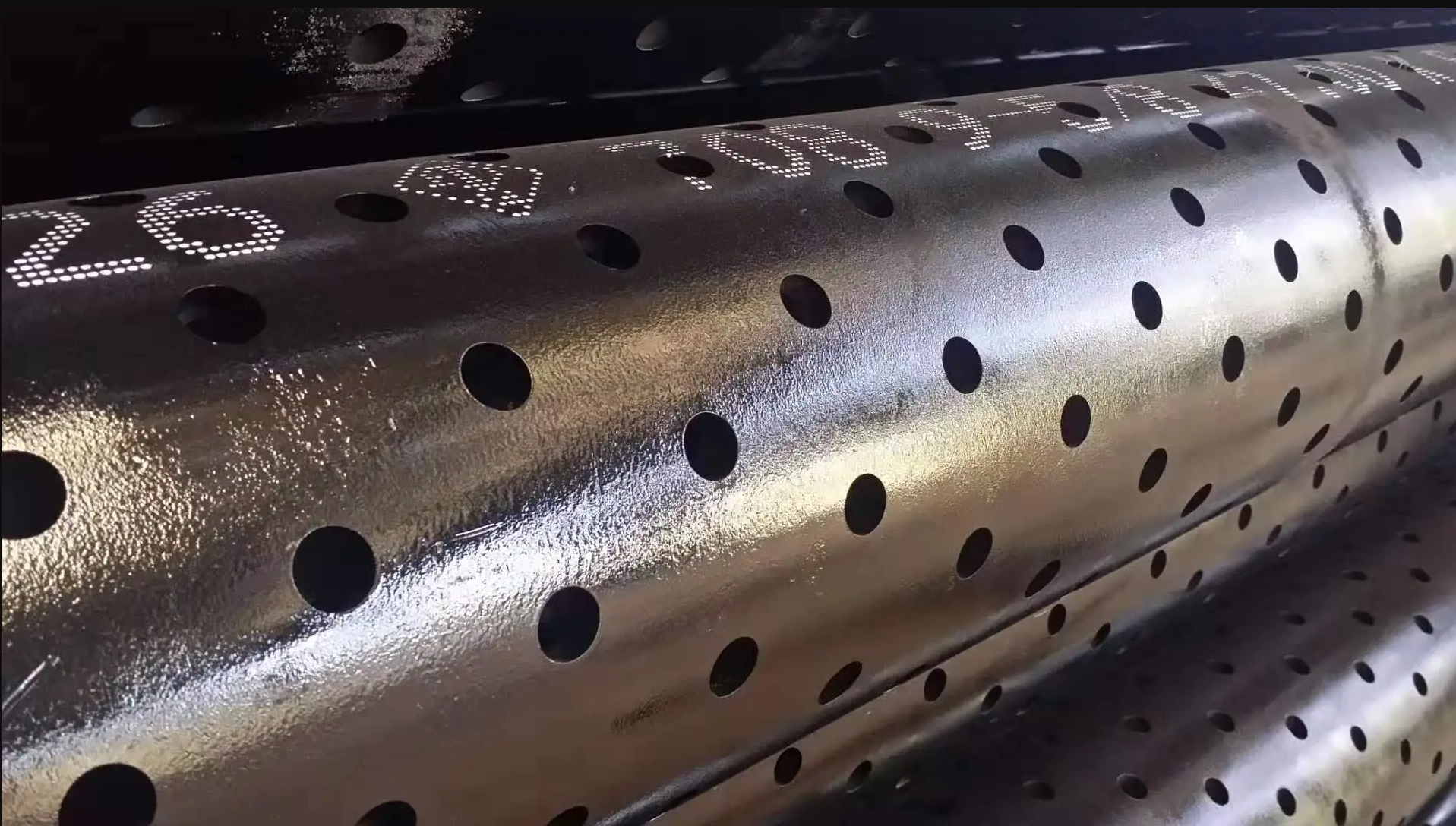
Applications of Perforated Pipe: Perforated well screen is a type of filter used in oil and gas wells. It is designed to control the flow of oil and gas from the well, while preventing sand and other debris from entering the well. perforation in the context of oil wells refers to a hole punched in the casing or liner of an oil well to connect it to the reservoir. Creating a channel between the pay zone and the wellbore to cause oil and gas to flow to the wellbore easily. In cased hole completions, the well will be drilled down past the section of the formation desired for production and will have casing or a liner run in separating the formation from the well bore. The final stage of the completion will involve running in perforating guns, a string of shaped charges, down to the desired depth and firing them to perforate the casing or liner. A typical perforating gun can carry many dozens of explosive charges. Commonly, perforation guns are run on E-line as it is traditional to use electrical signals from the surface to fire the guns. In more highly deviated wells, coiled tubingmay be used. Newer technologies Read more
Custom Slot Well Screen Pipe | Slotted Perforated Well Screen for Casing
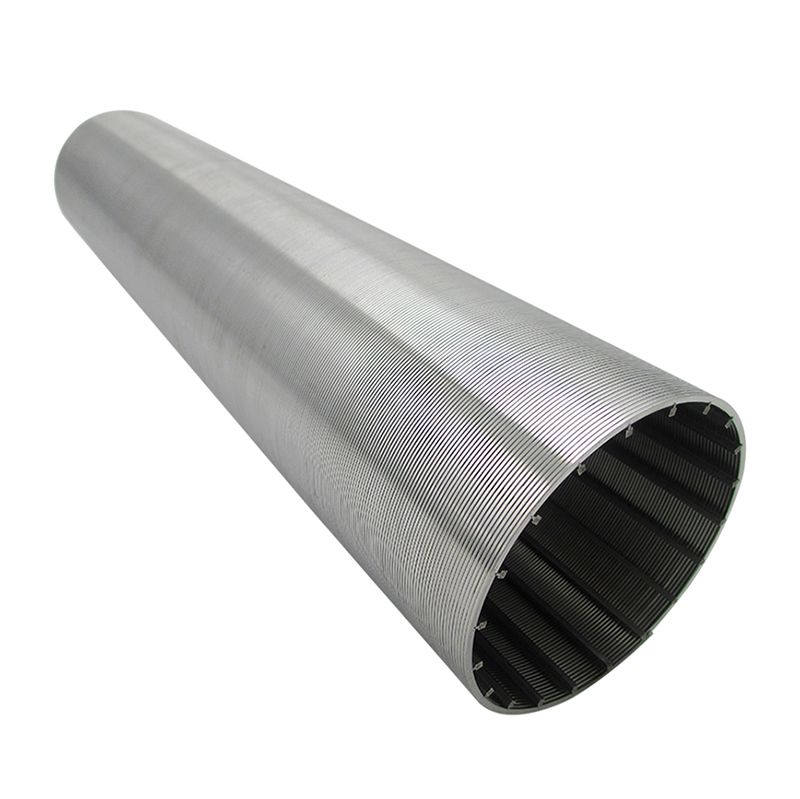
Product Continuous slot well screen, wire screen, Johnson screen Slot Size(mm) 0.10, 0.15, 0.2, 0.25, 0.30-3, also achieved upon customer request. Material Low Carbon ,Low Carbon Galvanized steel (LCG), Stainless Steel( 304,etc.) Lengths up to 6 meters Diameter 89 mm to 1200 mm End Connection Plain beveled ends, welding rings, flanges or threaded ( Thread male/female coupling ) . The data for reference only, we can design it as the client’s request. Continuous-Slot Well Screen is made by a v or wedge winding cold-rolled wire around an internal array of longitudinal support rods. The world advanced all-welded technology is used with each intersecting point of these wire fusion welded, which creates the robust construction and excellent mechanical performance. The v or wedge shaped profile wire wraps around the support rods over the full length of the screen creating a continuous slot opening, hence the screen allows water or oil entry your well freely in ample quantities, while at the same time keeps the majority of sand and gravel out of the well. All slots should be clean and free of burrs and cuttings and can be changed according to clients’ need. Application: For water, oil and gas wells, mainly water well industry. Read more










